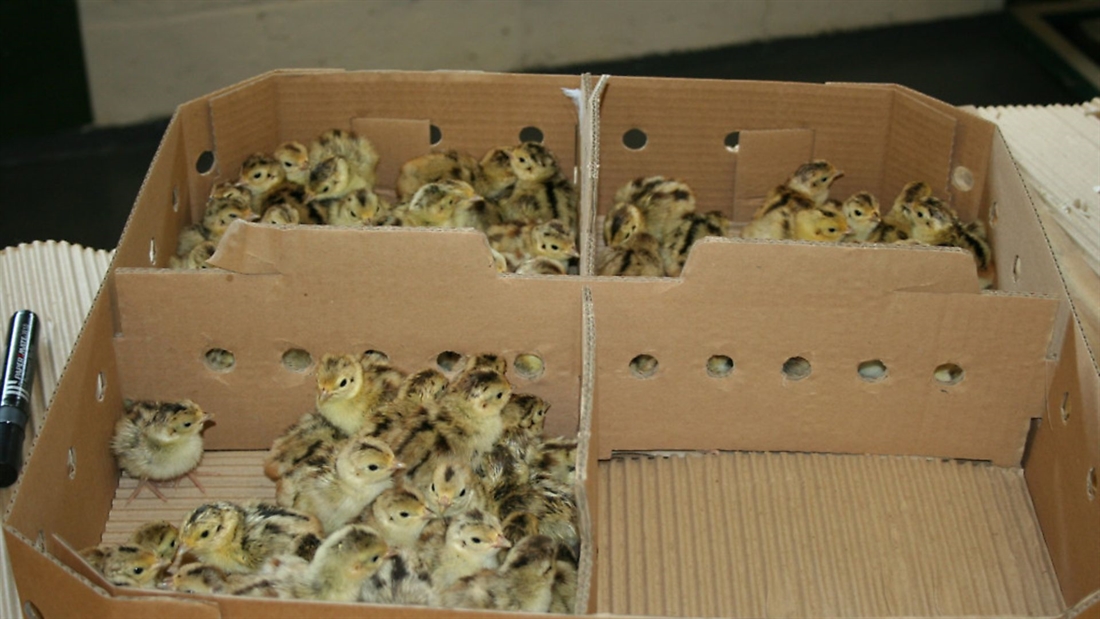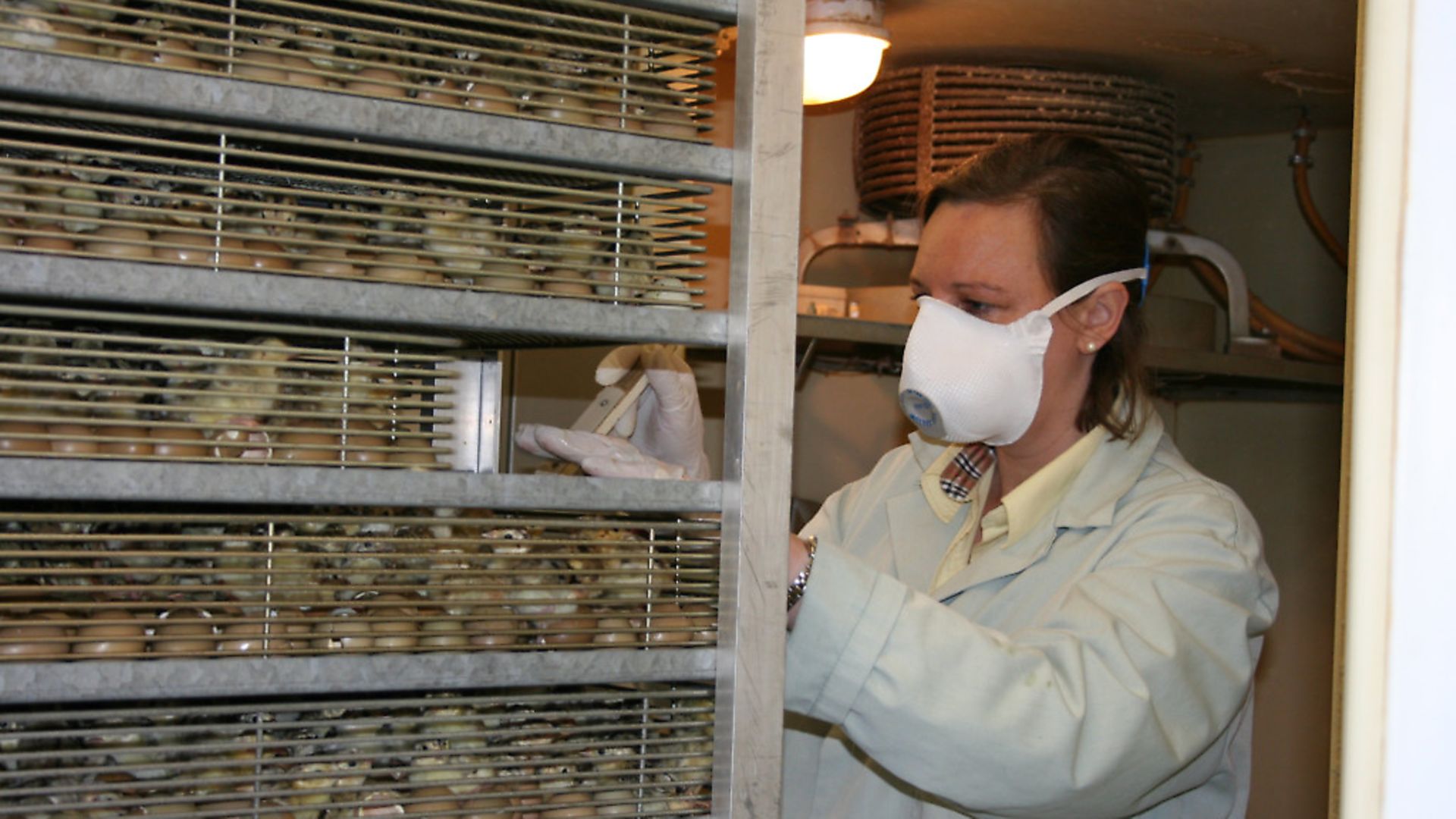GAMEBIRD REARING part 1 – everything you need to know about eggs and hatching

Tim Maddams starts his gamebird rearing journey by finding out where the eggs come from, what it takes to hatch them, and what the alternatives are if you don’t have an incubator
The first port of call for me when exploring the subject of how gamebirds are reared was to look at the possibility of rearing a handful or so of pheasants or partridges at home in the garden: hatch the eggs (once I’ve found out where to get them from!), rear them up a bit, stick ‘em in the old chicken run, and jobs a good’un, right?
Well, before embarking upon any new project I like to do the terribly old-fashioned and very British thing and buy myself a book to use as a base reference point. Building a shed? Get a book on the subject. Maintaining the lawnmower? Get a book on the subject… This will seem like madness to some of you, but of course without the basic experience in these fields, not getting a useful reference guide would be unheard of, well, for me anyway.
And so, a copy of the very detailed and handsomely presented Rearing Game Birds and Gamekeeping landed on the welcome mat with a satisfying thud. This is an excellent book written by the very talented and dedicated Beth Williams, and it’s an eye-opener, that’s for sure. It is, unsurprisingly, written for the would-be game rearer and keeper looking to do it themselves. It also offers advice, options and suggestions on all aspects of rearing, releasing and then hopefully keeping gamebirds, with welfare, cost and practicality all dealt with brilliantly and more or less in that order.
I enjoyed the book immensely. It is a brilliant step-by-step ‘nitty gritty’ guide to all you need to know and offers a few viewpoints for different situations, but the difficult truth I soon faced was that I was in no position to be rearing even a handful of gamebirds! I don’t have the time; I don’t have the space. Both of these are all-important factors. It was a tough decision for me as I was rather looking forward to the challenge, but I am a strong believer that if you are going to do something, you should do it to the best of your ability, particularly where the wellbeing of your charges is concerned.
Tough decision made, it’s on with the first questions I need to get answers to…
Where to get the eggs
First up, where do we get all the eggs? Put simply, they come from hen birds. Because each brood of eggs is taken away, the hens will mate and lay again, sometimes several times, and they lay a lot of eggs in each brood – sometimes as many as 70 eggs can be produced by just one hen in a laying season (in captivity). You can, of course, start with purchased adult breeding stock, or capture said stock from the wild before the end of the game season. You would then breed them to lay the eggs, simply removing the eggs, ideally twice a day, without over disturbing the laying hen. Another, and far more common option, is to purchase eggs laid at game farms both here and in Europe, which are laid in ‘enriched’ cages on a vast scale. The welfare here is tricky. The birds must have a very high-quality environment so as to meet their natural needs, but of course a cage is a cage, and it’s not a perfect system.
On the plus side, although gamebirds are far less well-suited to a life confined than their domesticated cousins, all the eggs that hatch get used; unlike chicken farming, where of course all the male chicks are killed as soon as they are hatched.
Then what?
That’s just the start… if you are going to rear gamebirds from eggs, you are going to need an incubator or, alternatively, chicks can be hatched under broody hens (though this practice is very seldom used these days). Mortality can be high. These are not chickens and they apparently struggle to hatch, often needing a little assistance. It’s this factor, combined with the cost of time and equipment, that leads most keepers to purchase day-old chicks, or indeed leave it until the poult stage, despite the higher cost.
So now I know how we get so many eggs from such a small holding stock… speaking of which, this got me wondering about the laying birds. Do game farmers like to keep a closed stock so they can ensure the correct breed and genetics? Or are the caught-up birds the mainstay of the job? For answers to these questions I had a chat with the immensely well-informed (as you would hope) Tim Weston, development officer at the National Gamekeepers’ Organisation, or NGO (which always makes me smile – an NGO called ‘NGO’! Maybe it’s just me…).
Tim filled me in: “It’s the main difference between Europe and the UK. In Europe, most birds come from closed flocks, which means they can guarantee the strain of the bird and also probably have marginally better biosecurity as there is no input of new birds without strict control to the breeding flock, and never from the wild. Here in the UK, both systems are used and can be effective if done properly – it’s always occurred to me, though, that it’s a bit odd that we breed so many birds from what’s left at the end of the season. After all, mostly these birds will be the poor flyers or the ‘hard to keep in the drive’ birds. In terms of selecting breeding stock, it’s a bit of pot luck really.”
But there are no ‘bad guys’ in the game farming market in the UK, of that Tim is certain: “Being successful in today’s game rearing industry is totally dependent upon good husbandry – no one is going to go into game rearing for a fast buck; it’s too demanding and they just wouldn’t be successful. That’s not to say that there weren’t some bad apples in the past, but they’re out of the picture these days.”
So, progress has been made, and the game rearing industry is modernising. I’ve been getting in touch with a shoot that rear their own birds, and a local game farm, hoping to plan visits to each and learn some more.
I’m disappointed that I won’t be rearing any birds myself in the near future, but I’m overwhelmed at how much there is to know and am thoroughly enjoying finding out more and more as I go along.






